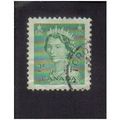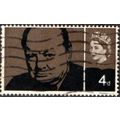Crawley, W Sussex - St. John's Church 1907 - library repro postcard, 1993
- Condition : Used
- Dispatch : 2 Days
- Brand : None
- ID# : 180569941
- Quantity : 1 item
- Views : 234
- Location : United Kingdom

- Seller : justthebook (+1703)
- Barcode : None
- Start : Wed 08 May 2019 09:23:48 (BST)
- Close : Run Until Sold
- Remain : Run Until Sold
More Listings from This Seller view all
Seller's Description
- Postcard
- Picture / Image: St. John's Church, Crawley in 1907
- Publisher: West Sussex County Council libraries 1993
- Postally used: no
- Stamp: n/a
- Postmark(s): n/a
- Sent to: n/a
- Notes / condition: older image on more recent card
Please ask if you need any other information and I will do the best I can to answer.
Image may be low res for illustrative purposes - if you need a higher definition image then please contact me and I may be able to send one. No cards have been trimmed (unless stated).
------------------------------------------------
Postage & Packing:
Postage and packing charge should be showing for your location (contact if not sure).
No additional charges for more than one postcard. You can buy as many postcards from me as you like and you will just pay the fee above once. Please wait for combined invoice. (If buying postcards with other things such as books, please contact or wait for invoice before paying).
Payment Methods:
UK - PayPal, Cheque (from UK bank) or postal order
Outside UK: PayPal ONLY (unless otherwise stated) please. NO non-UK currency checks or money orders (sorry).
NOTE: All postcards are sent in brand new stiffened envelopes which I have bought for the task. These are specially made to protect postcards and you may be able to re-use them. In addition there are other costs to sending so the above charge is not just for the stamp!
I will give a full refund if you are not fully satisfied with the postcard.
----------------------------------------------
Text from the free encyclopedia WIKIPEDIA may appear below to give a little background information (internal links may not work) :
*************
Crawley () is a town and borough in West Sussex, England. It is 28 miles (45 km) south of Charing Cross (London), 18 miles (29 km) north of Brighton and Hove, and 32 miles (51 km) north-east of the county town of Chichester. Crawley covers an area of 17.36 square miles (44.96 km2) and had a population of 106,597 at the time of the 2011 Census.
The area has been inhabited since the Stone Age,[2] and was a centre of ironworking in Roman times. Crawley developed slowly as a market town from the 13th century, serving the surrounding villages in the Weald. Its location on the main road from London to Brighton brought passing trade, which encouraged the development of coaching inns. A rail link to London opened in 1841.
Gatwick Airport, nowadays one of Britain's busiest international airports, opened on the edge of the town in the 1940s, encouraging commercial and industrial growth. After the Second World War, the British Government planned to move large numbers of people and jobs out of London and into new towns around South East England. The New Towns Act 1946 designated Crawley as the site of one of these.[3] A master plan was developed for the establishment of new residential, commercial, industrial and civic areas, and rapid development greatly increased the size and population of the town over a few decades.
The town contains 13 residential neighbourhoods radiating out from the core of the old market town, and separated by main roads and railway lines. The nearby communities of Ifield, Pound Hill and Three Bridges were absorbed into the new town at various stages in its development. In 2009, expansion was being planned in the west and north-west of the town, in cooperation with Horsham District Council.[4] Economically, the town has developed into the main centre of industry and employment between London and the south coast. Its large industrial area supports manufacturing and service companies, many of them connected with the airport. The commercial and retail sectors continue to expand.[3]
St John the Baptist's Church is an Anglican church in Crawley, a town and borough in West Sussex, England. It is the parish church of Crawley, and is the oldest building in the town centre, dating from the 13th century[1][2]—although many alterations have been made since, and only one wall remains of the ancient building.[2]
In the Norman era, Slaugham and Cuckfield were the most important places in the north of the county of Sussex.[2] When Crawley first started to develop as a village in the 13th century, it was in the parish of Slaugham[1] in the Hundred of Buttinghill (hundreds were ancient divisions of land covering several parishes).[3] As the new village was distant from the parish church at Slaugham (St Mary's), several miles south, a stone church was built as a chapel of ease.[2] It is known to have existed before 1267, when it was passed on in a will,[4] and it was still the daughter church of Slaugham in 1291; but by the early 15th century it was referred to as a "free" church and a "permanent chantry".[2] The parish of Crawley was therefore established separate from Slaugham at some point, probably by the end of the 14th century,[5] and St John the Baptist's was regarded as its parish church by the time chantries were abolished in the 1540s.[6] Crawley was a small, very narrow, split parish, and did not cover the whole of the village of Crawley: the boundary between it and the parish of Ifield—and between the Hundred of Buttinghill and the Hundred of Burbeach, in which Ifield lay—ran up the middle of the High Street.[7][8] The detached part of Crawley parish consisted of heavily forested land and one farm near Pease Pottage.[8][8] The total area of the parish was less than 800 acres (300 ha); Ifield parish was six times larger, in contrast.[7]
The first additions to the structure came in the 15th century, when a tall tower was added at the western end, the windows in the nave were enlarged and a rood screen was installed between the chancel and the nave.[9] The nave roof was also rebuilt at this time, and the earliest surviving memorial carvings and stones in the church are also 15th-century.[5][10]
By the 16th century, Crawley's development into a thriving market village meant that its parish was much more important than that of Slaugham, and the connection between their two churches was legally severed.[11] At least 150 people regularly attended the church,[12] but its income was modest and priests frequently moved on to richer parishes.[13] The building fell into disrepair in the 17th and 18th centuries, although the four cracked bells in the tower were replaced by London bell-founder Thomas Lester in 1742. Lester cast dozens of bells for Sussex churches, and reused the metal from the old bells in his work at Crawley.[14]
Major changes took place in the 19th century. The tower partially rebuilt and heightened by 1814, although the original stone was reused.[6][10][15] Some more work took place in 1845,[6] but the greatest changes happened in 1879 and 1880. A new north aisle was added, a porch was built on the north side, the chancel was completely rebuilt and reordered, an organ chamber was built, and the bells were replaced by a new ring of eight bells, hung for change ringing, cast by Gillett, Bland & Company of Croydon.[6][10][15][16] Nikolaus Pevsner has criticised the resulting appearance of the church, calling it "dully Victorian" and noting that its best feature is the unrestored 15th-century nave roof.[15]
The church's location just east of the High Street[15] meant that it was very close to the boundary of Ifield parish. People who lived on or around the west side of the High Street would often attend St John the Baptist's although their parish church was St Margaret's. One such worshipper was Mark Lemon, founding editor of the satirical magazine Punch. Having adopted Crawley as his home town, he lived at Vine Cottage on the west side of the High Street, and regularly attended St John the Baptist's instead of St Margaret's.[17] However, his substantial girth caused him problems: he had to sit in the gallery because there were no pews large enough to accommodate him in the nave.[18]
The church, graveyard and church walk are reportedly haunted a number of paranormal sightings have happened over the years. The churchyard contains the war graves of two soldiers of World War I and an airman of World War II.[19]
p.Listing Information
| Listing Type | Gallery Listing |
| Listing ID# | 180569941 |
| Start Time | Wed 08 May 2019 09:23:48 (BST) |
| Close Time | Run Until Sold |
| Starting Bid | Fixed Price (no bidding) |
| Item Condition | Used |
| Bids | 0 |
| Views | 234 |
| Dispatch Time | 2 Days |
| Quantity | 1 |
| Location | United Kingdom |
| Auto Extend | No |



 for 1 item(s)
for 1 item(s)
















